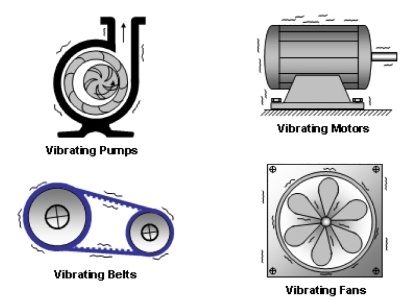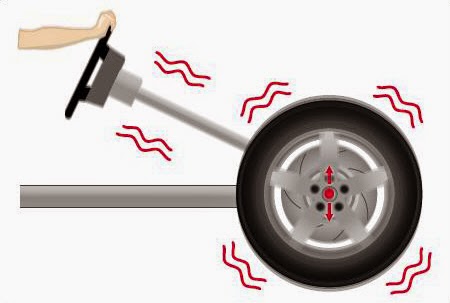 Every building experiences a certain amount of shock and/or vibration—whether caused by people or machinery. Vibration is a mechanical phenomenon in which periodic motion is generated by a force around an equilibrium point. The possible effects of these vibrations can vary from insignificant to disastrous, depending on the intensity and duration of the shock as well as the construction of the concerned structure or equipment.
Every building experiences a certain amount of shock and/or vibration—whether caused by people or machinery. Vibration is a mechanical phenomenon in which periodic motion is generated by a force around an equilibrium point. The possible effects of these vibrations can vary from insignificant to disastrous, depending on the intensity and duration of the shock as well as the construction of the concerned structure or equipment.
Rotating machinery, such as blowers, motors, and components in computers, also tend to vibrate and can cause significant damage to the pieces around it. These components may transmit vibration and noise to the surrounding structure, having a negative impact on the machine’s production or reliability while also affecting humans working with these machines.
As compared to stationary installations, mobile machines like vehicles and boats experience greater amounts of shock and vibration. Not only are there parts within these mobile machines that create shaking or vibration, there are outside forces at work (like irregular roads and air turbulence) that need to be mitigated.
Vibration Management Overview:
 Vibration management is an essential component of every engineering design. You might not notice it, but there are an astronomical number of applications with effective vibration management all around you, varying from buildings, to car engines, rail cars, and aircraft. Even the mirrors in your car are checked through a mechanical vibration test to ensure they offer visual clarity at great speeds. Installations that don’t address shock and vibration properly give rise to malfunctioning machines and, in extreme situations, catastrophic failure.
Vibration management is an essential component of every engineering design. You might not notice it, but there are an astronomical number of applications with effective vibration management all around you, varying from buildings, to car engines, rail cars, and aircraft. Even the mirrors in your car are checked through a mechanical vibration test to ensure they offer visual clarity at great speeds. Installations that don’t address shock and vibration properly give rise to malfunctioning machines and, in extreme situations, catastrophic failure.
Vibration Isolation
Machinery is isolated to prevent the transmission of noise, shock, and vibration. It is one of the most critical phases of advanced building and machine design. Light weight structures and the placement of machinery on upper floors can increase the demand for vibration control. Isolation is basically used to minimize the impact of the dynamic forces, created by a machine’s moving components, into the surrounding structure.
A mechanical vibration isolator is a flexible support used to decouple a material from forced vibration. Springs are commonly used as isolators to minimize the transmitted vibrational force. These springs may involve steel coil, rubber, pneumatic, fluid damping, or combination of one or more.
Shock Isolation
Shock is a transient condition in which an impulse of energy is created. This energy is transmitted to the surrounding structure in a short duration with high speed. Shock isolation can limit the transmission of forces to the surroundings of the system in which shock originates.
Isolators are used to store shock energy, similar to how capacitors store electrical energy, and then release it over a longer duration. The shock isolator deflects to ensure proper energy storage. The force verses deflection curve measures the efficiency of a shock isolator.
Characteristics of a Shock & Vibration Isolator
The two main characteristics of an isolator that have an impact on the transmissibility of the system are level of damping and natural frequency of the system.
What is transmissibility?
Transmissibility is used to classify materials with vibration management properties. It is basically a ratio of the vibration input in a system to the vibration output of a system. For instance, a certain mechanical vibration isolator has a transmissibility of 70 percent. This indicates that 70 percent of the vibration is transmitted into the isolator and not to the system.
What is Damping?
This is the process in which kinetic energy is converted into heat to dissipate energy from a system. There are three basic kinds of damping, including viscous, solid/structural, and coulomb damping. Damping in most isolators is intended to reduce the amplitude of vibration at natural frequency. An ideal isolator is the one that has minimum damping in its isolation region and maximum damping at natural frequency.
What is Natural Frequency?
This is the frequency at which an object tends to vibrate naturally. If no outside forces are involved, the material vibrating at resonant or natural frequency can vibrate forever. But forces always act on the vibrating material and remove energy. This phenomenon, known as damping, dissipates the vibration.
Understanding and applying the concept of natural frequency is important for all modern engineering designs. If a system is designed to vibrate at resonant frequency, the resulting oscillations can develop large amplitudes. This may result in shaking, component deterioration, and even structural failure.



